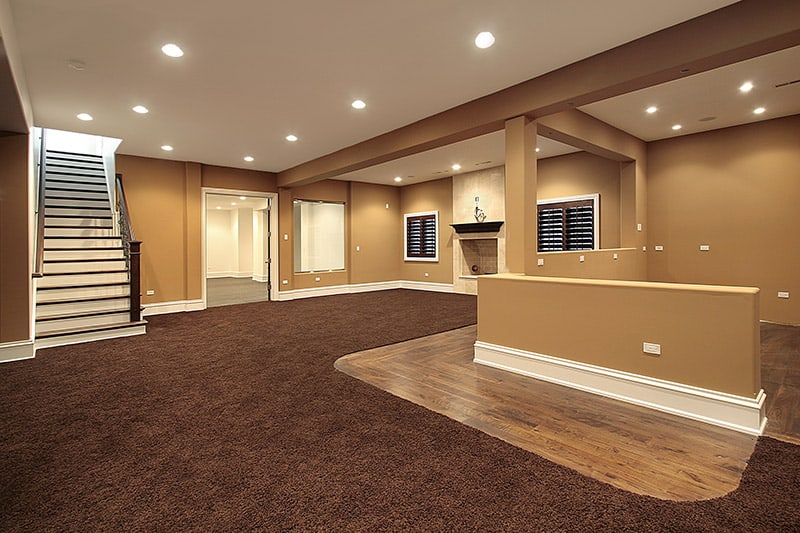
Finishing a basement is one of the most rewarding home improvement Homesdecoratingblog projects. It not only increases the usable space in your home but also adds significant value to the property. Whether you envision a cozy family room, a home office, a guest suite, or even a personal gym, the possibilities with a finished basement are almost endless. However, basement finishing requires thoughtful planning and execution to avoid common issues such as moisture, lighting problems, and insufficient insulation.
Understanding the Purpose of Your Finished Basement
Before beginning any construction work, it is important to define the purpose of the basement. The way the space will be used affects every decision you make during the design process. A basement intended for a home theater will have different requirements compared to one designed for a rental apartment or a children’s playroom. Understanding the function helps in choosing the right materials, layout, lighting, and ventilation system.
Assessing the Condition of Your Basement
A successful basement finishing project begins with a thorough inspection. Since basements are located below ground level, they are prone to certain structural and environmental challenges. Addressing these concerns in advance can prevent major issues in the future.
Dealing with Moisture and Water Intrusion
Moisture is the biggest enemy of any basement. Even the most beautifully finished space will be ruined if it is constantly exposed to dampness or water leaks. Begin by checking for any signs of moisture such as water stains, mold growth, or a musty smell. Waterproofing methods like sealing cracks, installing sump pumps, or adding vapor barriers can significantly reduce the risk of water damage.
Checking Ceiling Height and Egress Requirements
Building codes often have specific requirements for minimum ceiling height and emergency exits. A finished basement used as a bedroom or living area must have proper egress windows or doors to ensure safety. Measuring the ceiling height and ensuring compliance with local regulations should be done early in the planning phase to avoid complications during inspection.
Designing a Functional Basement Layout
A good basement layout maximizes space while accommodating essential systems such as plumbing, HVAC, and electrical panels. It is important to work around existing elements and plan the new layout accordingly.
Creating Separate Zones
Dividing the basement into zones can help in better space utilization. You can designate different areas for entertainment, work, storage, or relaxation. Even an open-concept basement can benefit from thoughtful zoning through the use of furniture arrangement, floor changes, or ceiling variations.
Taking Advantage of Natural Light
Most basements receive limited natural light, but there are creative ways to make the space feel bright and open. Installing larger windows where possible, choosing light-colored paints, and using reflective surfaces like mirrors and glass can help make the space feel less enclosed. Additionally, artificial lighting should be layered to ensure a warm and inviting atmosphere.
Choosing the Right Materials for Basements
Basement environments are different from upper levels of a house, which means the materials used need to be more resistant to moisture and temperature fluctuations.
Flooring Options That Work Well
Because of the potential for moisture, it is best to avoid hardwood or carpet directly on the concrete floor. Instead, materials like vinyl planks, tile, or engineered wood are more durable and moisture-resistant. Some homeowners also opt for area rugs over sealed concrete for warmth and style without sacrificing practicality.
Wall and Ceiling Materials
Moisture-resistant drywall, also known as green board, is ideal for basement walls. It helps prevent mold growth and increases the lifespan of the walls. For ceilings, drop ceilings are a popular choice because they provide easy access to pipes and wiring, while drywall ceilings offer a more seamless and finished appearance.
Installing Insulation and Climate Control
Basements tend to be cooler and more humid than the rest of the house. Proper insulation is key to making the space comfortable year-round. Insulating both walls and floors can improve temperature control and energy efficiency. In addition, extending your home’s HVAC system or installing a separate unit for the basement ensures proper airflow and climate regulation.
Soundproofing Considerations
If the basement will be used as a media room, bedroom, or office, soundproofing becomes an important factor. Acoustic insulation in the ceiling and interior walls can reduce noise transmission and create a more peaceful space.
Finishing Touches That Add Value
Once the construction phase is complete, it’s time to focus on the finishing touches that bring warmth and personality to the space. Thoughtfully chosen lighting fixtures, wall colors, furniture, and decor can turn a plain basement into one of the most attractive parts of your home.
Built-In Storage and Shelving
One challenge in basements is the limited availability of natural storage areas. Built-in shelves, under-stair cabinets, or wall-mounted units can keep the area tidy and functional without occupying too much floor space. Custom solutions also add a high-end feel to the overall design.


